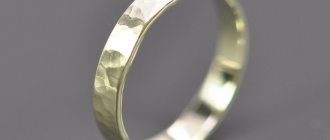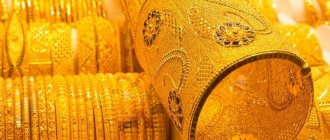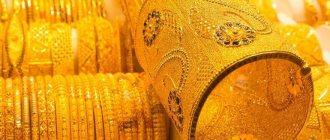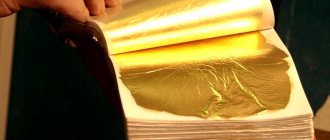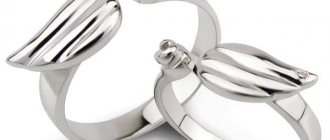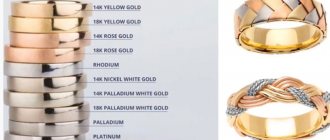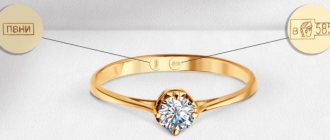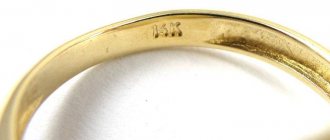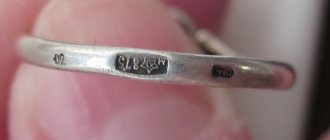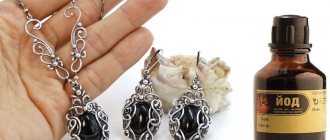Vermeil versus gold plated and filled.
The main difference is that the base of vermeil jewelry is made of silver, while plated and filled jewelry can be made of a variety of metals.
For this reason, vermeil jewelry can be more valuable than comparable plated and filled jewelry made from a cheaper base metal or alloy.
Vermeil does not necessarily have a thicker layer of gold than plated jewelry.
For gold-filled jewelry, although the thickness of the plating can vary, it is often thicker than vermeil jewelry.
What standard is silverware?
Silver cutlery was once considered a luxury item - only wealthy city dwellers could afford a set of precious metal for 12 people, and they used it exclusively on major holidays in order to impress guests. However, with the development of stainless steel utensils, everyday practicality has won - there is no longer a need to organize cleaning days, and the durability of a steel fork or spoon is commensurately higher.
The development of technology also brought the other side of the “coin” - skillful imitations began to be sold under the guise of silver or a silver-containing alloy. It is sometimes difficult to identify them even in the laboratory, especially when the surface is coated with rhodium for greater shine. However, a conscientious manufacturer always marks the product with a letter mark:
- MN (cupronickel) – copper + nickel with shares of manganese and iron;
- MNC (nickel silver) – zinc + copper + nickel;
- AL (aluminum);
- NZh or STAINLESS (stainless steel).
Directly cutlery silver produced in Russia must be stamped with a metric hallmark - from 875 or higher. It is this composition that provides the flexibility, scratch resistance and strength necessary for practical use. The higher the decorative component, the purer the metal required for fine work and finishing.
Important: The famous antibacterial effect of silverware is achieved only when the spoon or other utensil contains 91% or more pure argentum. That is, to disinfect water in a glass, you will need a jewelry-quality product.
What standard should silver be? Why is classification needed?
Those masters of fine craft who compare jewelry standards with exact fundamental science are right. It was the strict requirements for the composition of jewelry that made them jewelry, but behind every detail there is centuries-old improvement.
What is silver fineness in the usual metric system of measures? First of all, this is the percentage of pure natural composition with so-called ligatures. The latter provide durability and slightly strengthen the naturally soft composition. Secondly, every workshop or large plant has the right to make changes for more efficient alloying. The most popular impurity is copper, but besides it there is nickel, zinc, etc.
A buyer inexperienced with the topic will reasonably ask: “Why then spoil the pure composition if there are ready-made nuggets in nature? They don’t need super strength, we wear them for beauty.” The answer here is obvious - metal without alloys even looks very different from the finished product. A non-professional is unlikely to distinguish a silver “blank” from a piece of stainless steel or tin - it is dull, uneven in texture, and it would be a stretch to call it attractive.
As in the case of gold, silver samples are a production necessity. Even a slight reduction in the mass fraction helps give the metal its signature look, giving truly limitless possibilities for further processing in the jeweler's workshop.
Sample variations
Silver and gold are the most popular metals for jewelry designs in the world. The standards in the metric system are as follows: the digital indicator means the percentage of pure precious metal in the jewelry. For example, hallmark 999 means that the product is made from almost pure precious metal. The category of low standards in the international metric system includes samples below 958 (for gold), 925 (for silver). In addition to the material, the cost of the product is influenced by inserts of precious stones, engravings, etc. The most expensive items are those with diamonds.
- What is a ring, distinctive features
- Ring for a man's little finger: does such decoration matter?
What is the lowest standard of silver?
Until now, jewelry workshops are arguing about what constitutes the worst quality of a silver alloy, and at what percentage we should talk about the value of the raw material. In Russia there is a concept of the so-called silver-containing composition, where a range of 60-75% of pure metal is allowed. The Soviet Union was more loyal to factories - 875 was considered the most popular, and everything lower was automatically used for the production of cutlery and commemorative medals.
Today's craftsmen have not yet decided where costume jewelry ends and the field of jewelry begins. The cheap segment still refers to 720-750 samples; any percentage up to 92.5% purity will go to silverware. European countries and some Asian brands generally label 650, which is illiquid in our country, as a “precious” metal for an appropriate price.
